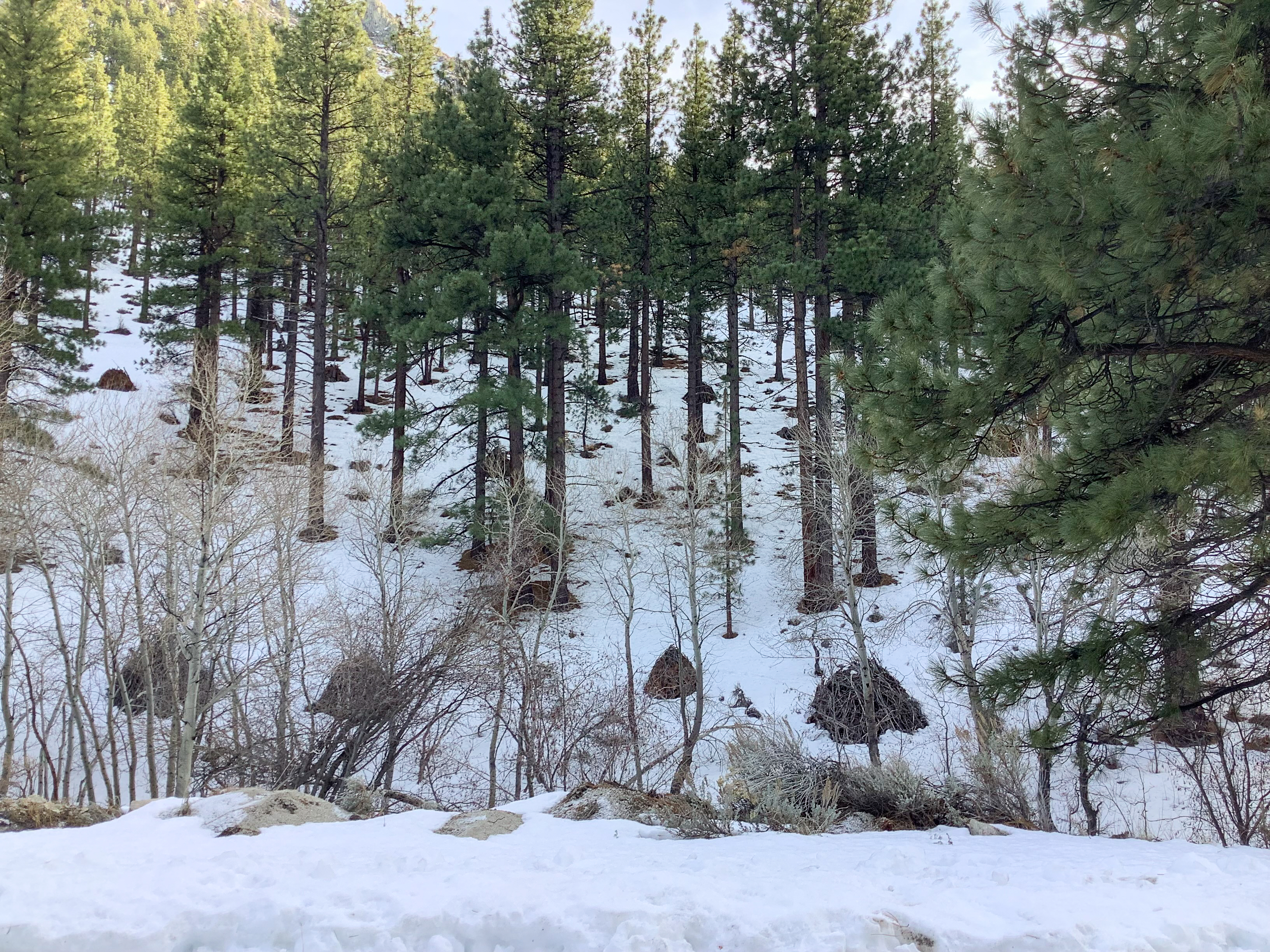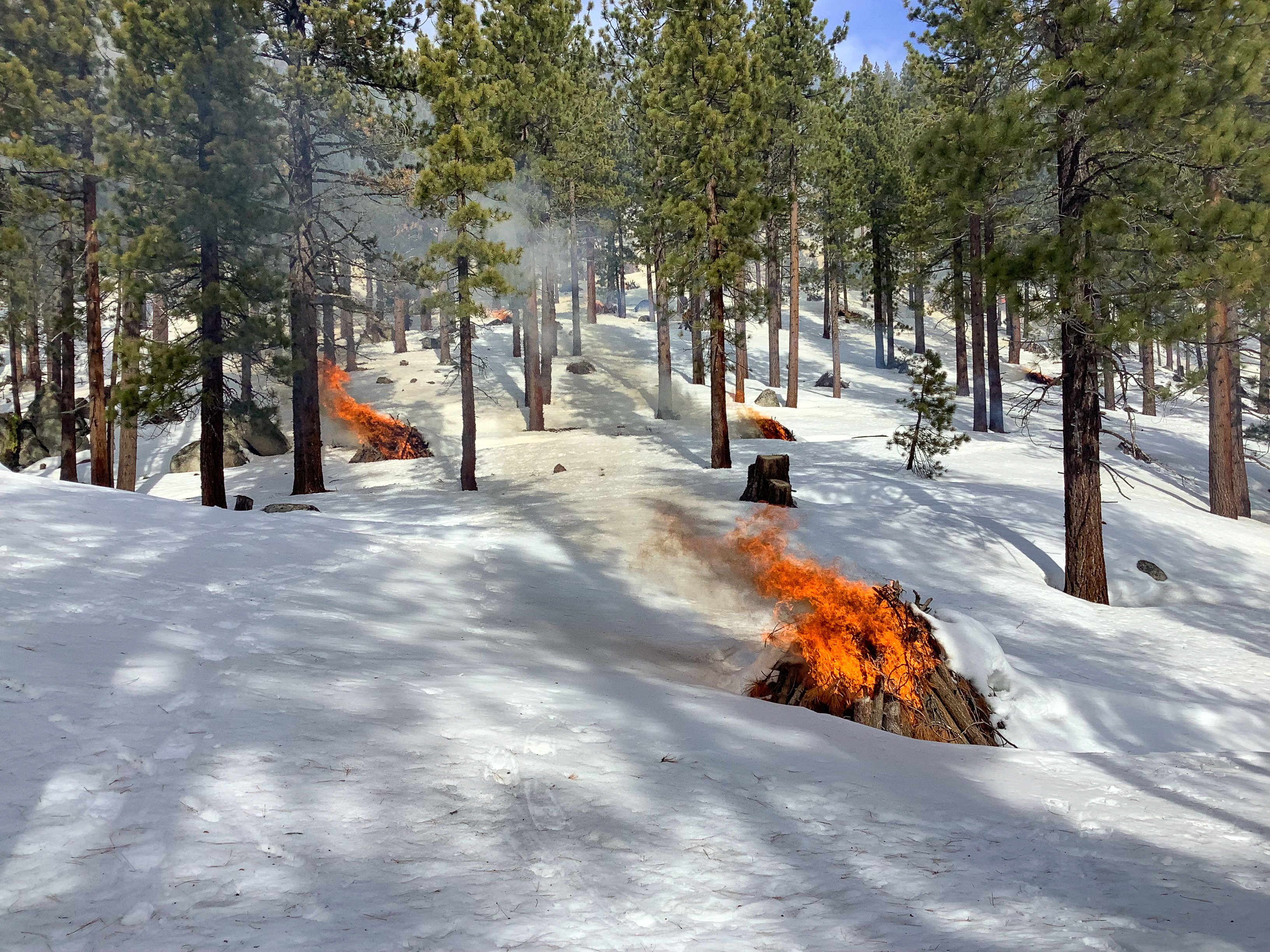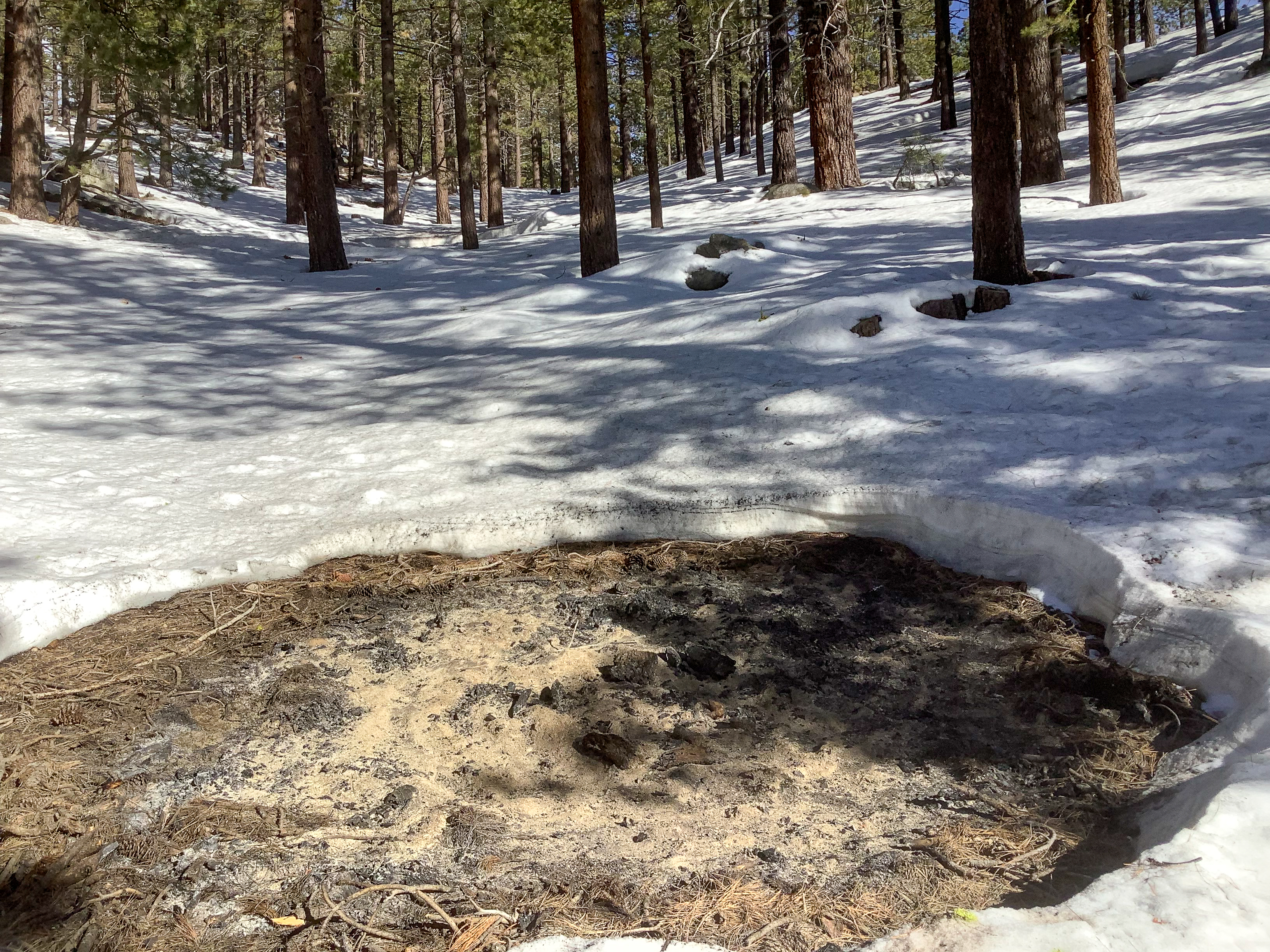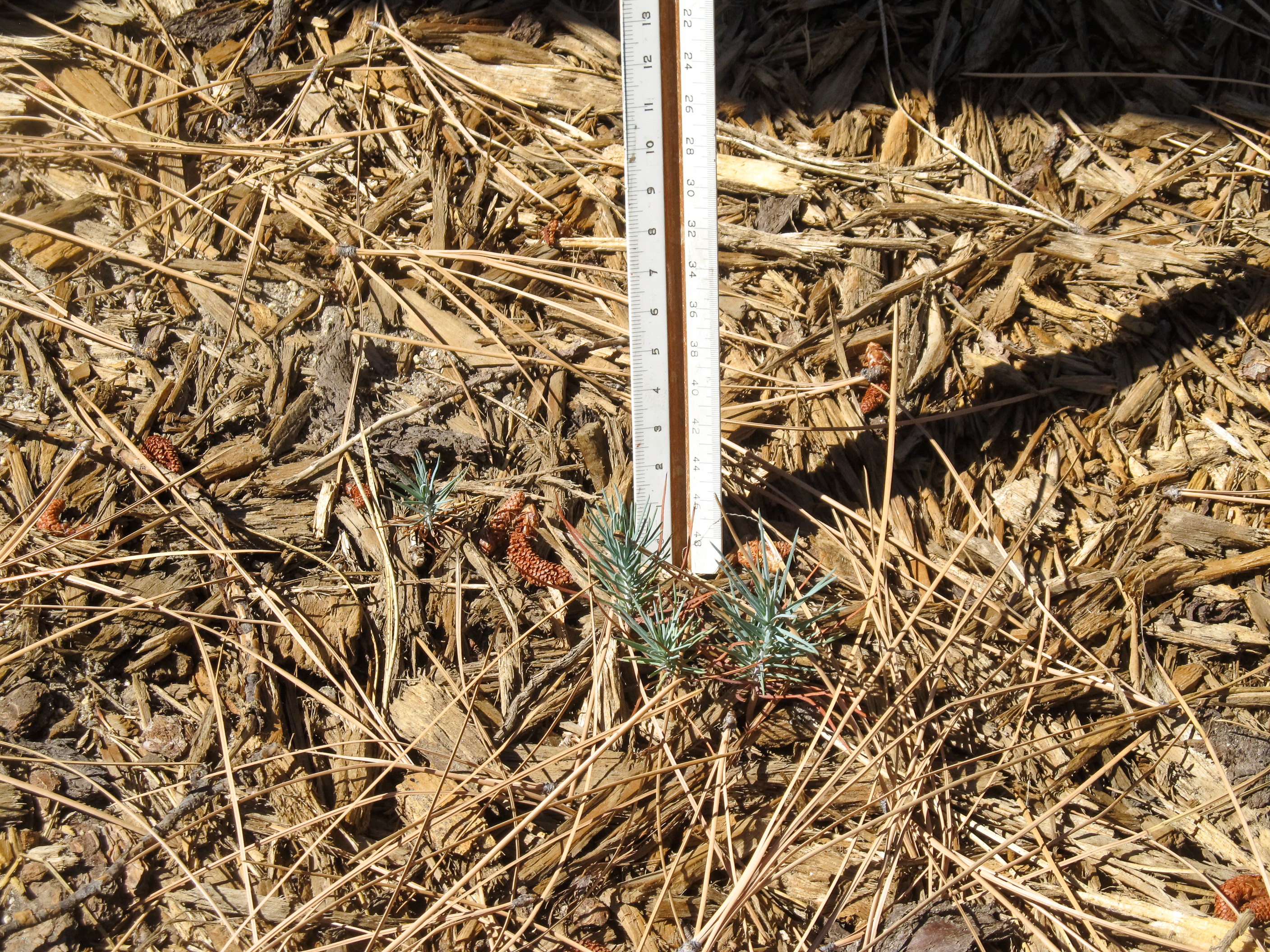Spooner Landscape Resilience Project
The Spooner Landscape Resilience Project (LRP) is a 300-acre environmental improvement initiative that began in 2018, with a helicopter logging operation surrounding Spooner Lake. The Nevada Tahoe Resource Team (NTRT) and Nevada Division of Forestry implemented this forest health project to create resilient mixed conifer stands, reduce fuel loading, and restore aspen groves.
In its initial phase, helicopters removed large, merchantable trees with the logs sent to a mill in Quincy, CA. Milling produced over 870 million board feet of lumber. More than 2200 tons of wood chips were also converted from biomass into energy. The largest healthiest trees were retained on-site to thrive for generations to come.

Logs hauled out by helicopter.
After the logging treatment, forestry crews thinned out the smaller, unmerchantable trees, cut out shrubs, and piled the slash and dead and down fuels. In January & February 2022 crews burned 1350 piles over 150 acres, to reduce the potential for catastrophic wildfires. 
Piles pre-burn.

Piles during burn

Piles After burn
Crews have also worked around Spooner Lake trail felling snags (dead trees) and removing overstocked white fir and Jeffrey pine. As with the prior treatment, non-merchantable trees and slash were piled for drying and future prescribed burning. This stage of the project also created defensible space near existing park facilities, by cutting and chipping smaller trees that posed a fire risk. Suitable logs were bucked into firewood lengths, to be sold, while larger, higher quality logs were hauled and stored off-site. The NTRT-NDF plans to mill these logs for lumber and wood products that can be used for future park improvements.
Restoring aspen groves, creating resilient Jeffrey pine and mixed conifer forests, and reducing fuel loading are just some of the benefits of the Spooner LRP. This project creates resilient forests that can better withstand drought, bark beetles, and wildfires, while continuing to provide recreational opportunities, wildlife habitat, and clean water.

Conifer reseeding.
Crews cut and chipped smaller trees near existing park facilities to increase defensible space; they bucked suitable logs into firewood lengths for a firewood sale; and they hauled and stored larger high-quality logs off-site at Eastern Sierra Conservation Camp. NTRT-NDF plans to mill the high-quality logs and re-purpose them for lumber and wood products that can be used for future park improvements.
For more infomation, contact Anna Higgins at ahiggins@forestry.nv.gov
